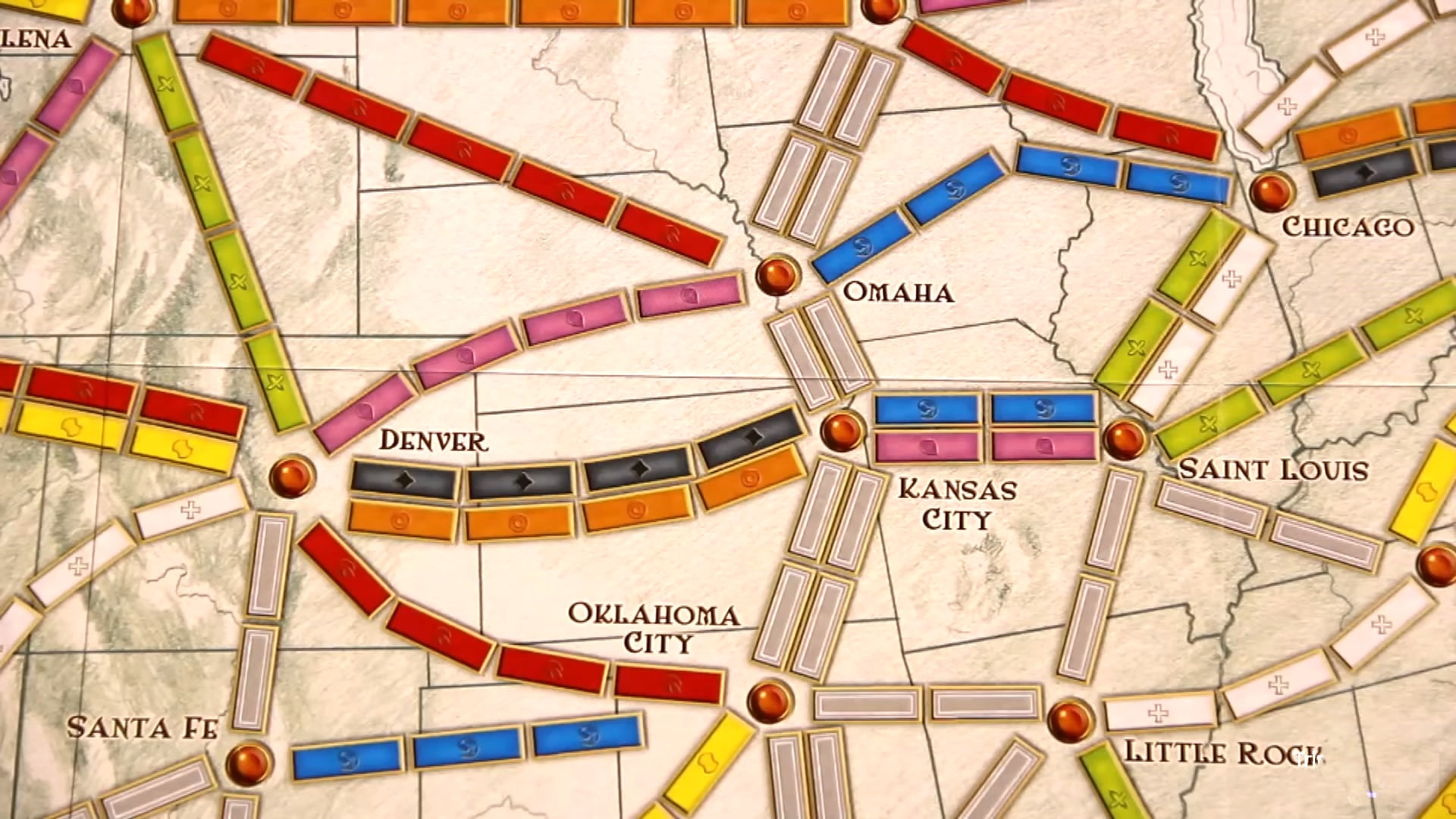In this article, I will introduce you to the basic rules of the board game Ticket to ride and show you how to play. The object of the game is to have the most points. You receive points in three ways. Every time you place trains on the board and connect to cities, by completing destination cards and by having the longest continuous train at the end of the game. You lose points for any uncompleted destination cards.
Setup
Layout the board and each player chooses a color. Place each player’s point tracking token in the corner next to the one. Shuffle the Train cards and deal four cards to each player. Place the deck on the table and turn over the top five cards face-up on the table. Shuffle the destination cards and deal three to each player. Each player may discard one of those if they like. Any return destination cards are placed at the bottom of the destination deck. Destination cards remain hidden from your opponents until the end of the game.
The person with the most travel experience goes first. On your turn, you perform one of three actions draw two train cards, claim a route or draw destination tickets. If you draw train cards you may draw from the face-up cards or the top of the deck or one of each. There is no limit to the number of cards a player can hold in his hand. When you draw a face-up card the top card of the deck immediately replaces the drawn card. If the draw deck runs out shuffle the discard into a new draw deck.
Locomotives
Locomotives are wild cards and if there is one face-up it can only be drawn if you haven’t drawn any other train cards this turn. It takes two draws to draw one face-up locomotive. If your first draw was from the top of the draw deck and it was a locomotive you are allowed to draw again whenever there are three face-up locomotives discard all five face-up cards and flip five new ones over to claim a route. You must play a colored set of train cards from your hand equal to the color and quantity of the route you wish to claim then place your colored train pieces on the board thus claiming your route. You may not mix card colors unless it is a locomotive and you may not partially claim a route if you don’t have enough cards.
Routes
Once you’ve claimed a route it is permanently yours for the rest of the game. If the route color is grey then you are allowed to use any of one color to claim that route. If there are two paths next to each other known as a double route a single player may only claim one side. Also, if you are playing with two or three players treat a double route as if they were single routes. Each time you claimed a route you gain points based on how long the route you claim it is. If the route is one train long you receive one point, if the route is two trains long you receive two points, three trains are worth four points, four is worth seven, five is ten and six is 15.
Each time you claim a route move your point tracker up the corresponding points. If on your turn you choose to draw destination cards you draw three new ones and you must keep at least one of them. Any ones you discard are placed under the destination deck. Destination cards give or take away points at the end of the game. This is indicated by the number on the card.
Gain Points
Add points to your score. if you successfully connect the specified routes on your destination card the path does not need to be the most efficient for it to count. Once one player has zero, one or two trains left at the end of his turn then each player including that player gets one final turn. Then the game ends and players calculate their score.
You may recap scores if necessary. And, you may add or subtract the appropriate destination points. Finally, you may assign the player who has the longest continuous train path a bonus of 10 points. If multiple players are tied for the longest continuous path then all tied players each receive 10 points. Tally up all the points and the player with the most points wins. If there is a tie then the player who completed more destination cards wins. Still a tie then the player who had the longest continuous path wins.

